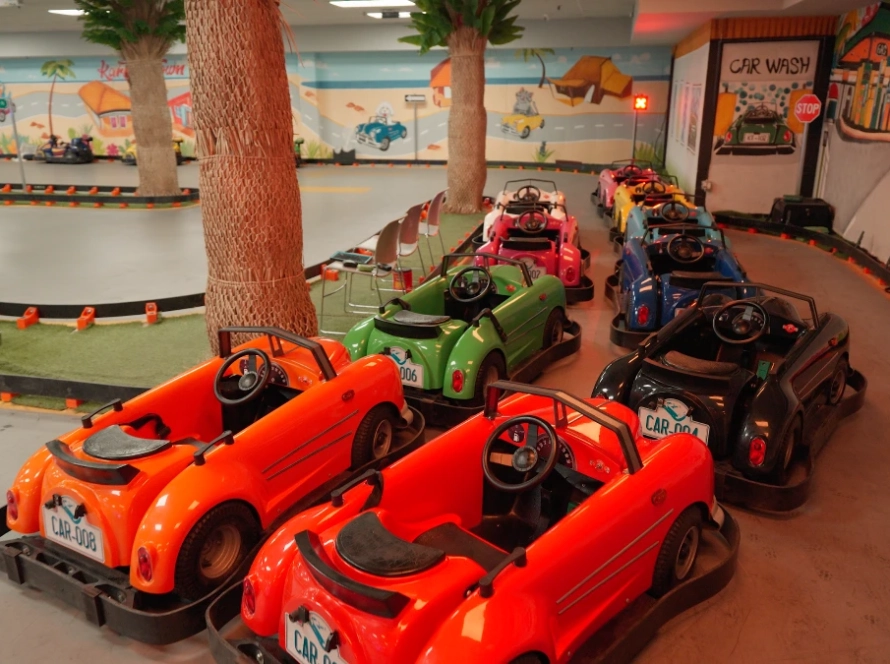On a Saturday morning, you might eagerly plan a park outing with your children, only to glance out the window and notice dark clouds looming, with rain forecast to follow. It’s a scenario countless parents know all too well—a sudden shift that derails your day. This is precisely why indoor playgrounds are emerging as a superior alternative to traditional outdoor parks. These carefully crafted environments deliver safety, convenience, and consistent enjoyment, addressing challenges outdoor spaces often can’t overcome. In this detailed guide, we’ll explore the reasons indoor playgrounds are gaining favor, provide actionable strategies for your visits, highlight their key advantages, and answer common questions. Keep reading to learn how indoor playgrounds can transform playtime into a reliable, delightful experience for your family.
The Growing Popularity and Context of Indoor Playgrounds
Outdoor parks have been a cornerstone of childhood recreation for generations, but shifting preferences and practical challenges are reshaping how families approach playtime. Today’s parents face hurdles that make outdoor parks less dependable, pushing them toward alternatives that better suit modern needs. Indoor playgrounds are rising to meet this demand, offering a controlled, secure option that’s gaining traction across the globe.
- Understanding the Shift in Family Recreation Preferences: A 2023 survey by the National Recreation and Park Association found that 68% of parents cite unpredictable weather as a major barrier to outdoor play, while 54% worry about safety risks like aging equipment or lack of supervision, driving the appeal of indoor spaces.
- Identifying the Persistent Challenges of Outdoor Parks: Weather fluctuations—rain, snow, or extreme heat—can halt plans instantly, while uneven terrain, outdated structures, and scarce amenities like restrooms make outdoor parks less practical for busy families.
Looking for Indoor Play Ground in Scarborough? Book a fun package now!
How Indoor Playgrounds Solve Outdoor Park Limitations
Far from being a mere substitute, indoor playgrounds are a purposeful solution designed to tackle the shortcomings of outdoor parks. They provide a consistent, enjoyable experience regardless of external conditions, and with a little planning, families can maximize their visits. Here’s how they address outdoor challenges and how you can make the most of them.
- Practical Strategies to Enhance Your Indoor Playground Experience: Choose age-appropriate zones (e.g., soft play for toddlers, climbing areas for older kids), pack essentials like socks and water, and visit during off-peak hours like weekday mornings for a quieter, more spacious outing.
- Real-Life Examples Demonstrating Indoor Playground Superiority: Facilities like “JumpZone” offer trampolines and foam pits in climate-controlled settings, outshining muddy or sun-scorched outdoor parks, while “Kidtopia” adds interactive stations that keep kids engaged beyond basic swings.
Key Benefits of Choosing Indoor Playgrounds Over Outdoor Parks
The advantages of indoor playgrounds extend beyond convenience, offering tangible improvements in safety, accessibility, and enjoyment that outdoor parks often can’t match. These benefits cater to both children’s needs and parental priorities, making them a standout choice. Below are the primary reasons they excel.
- Ensuring Safety and Comfort in a Controlled Environment: With padded flooring, enclosed spaces, and staff oversight, indoor playgrounds reduce risks—outdoor injuries outnumber indoor ones 3-to-1 per a 2022 Consumer Product Safety Commission report—while shielding families from sunburn, bugs, or weather disruptions.
- Providing Year-Round Access and Diverse Play Options: Open daily regardless of seasons, they feature varied attractions like slides, ball pits, and educational games, fostering creativity and activity beyond what standard park equipment provides.
- Offering Convenience Tailored to Modern Family Schedules: Ample parking, clean restrooms, and on-site dining options simplify logistics, eliminating the need to navigate fields or pack extensive supplies.
| Feature | Indoor Playgrounds | Outdoor Parks |
| Weather Dependency | None | High |
| Safety Features | Padded, supervised | Often inconsistent |
| Available Amenities | Restrooms, dining | Limited or none |
| Average Cost | $10–20 per visit | Typically free |
Common Mistakes to Avoid and FAQs About Indoor Playgrounds
Even with their many strengths, indoor playgrounds require some know-how to ensure a smooth experience, and parents often have questions about how they work. Addressing these can help you avoid pitfalls and clarify their value. Here’s a breakdown of what to watch out for and key answers.
- Steering Clear of Frequent Missteps for a Smooth Visit: Don’t assume all venues are equal—check cleanliness and safety via reviews on Yelp; avoid overpacking by sticking to socks and essentials; and confirm rules like food policies or reservations ahead of time.
- Answering Common Questions to Clarify Indoor Playground Appeal: They’re toddler-safe with soft zones for ages 0–3, cost $10–15 per child for added perks (unlike free parks), and can be paired with brief outdoor walks for fresh air when weather allows.
Sum Up
Indoor playgrounds stand out as a refined solution for recreational needs, eclipsing outdoor parks in safety, reliability, and adaptability. By eliminating weather-related interruptions, bolstering security with intentional design, and providing a broad spectrum of engaging activities, these facilities cater to the demands of contemporary families while ensuring children thrive in a fun, secure setting. For parents, educators, or caregivers seeking a consistent and enriching play environment, indoor playgrounds offer a compelling edge. Evaluate this option for your next family activity and consider how it might enhance your routine—your perspectives are welcome in the comments below.



